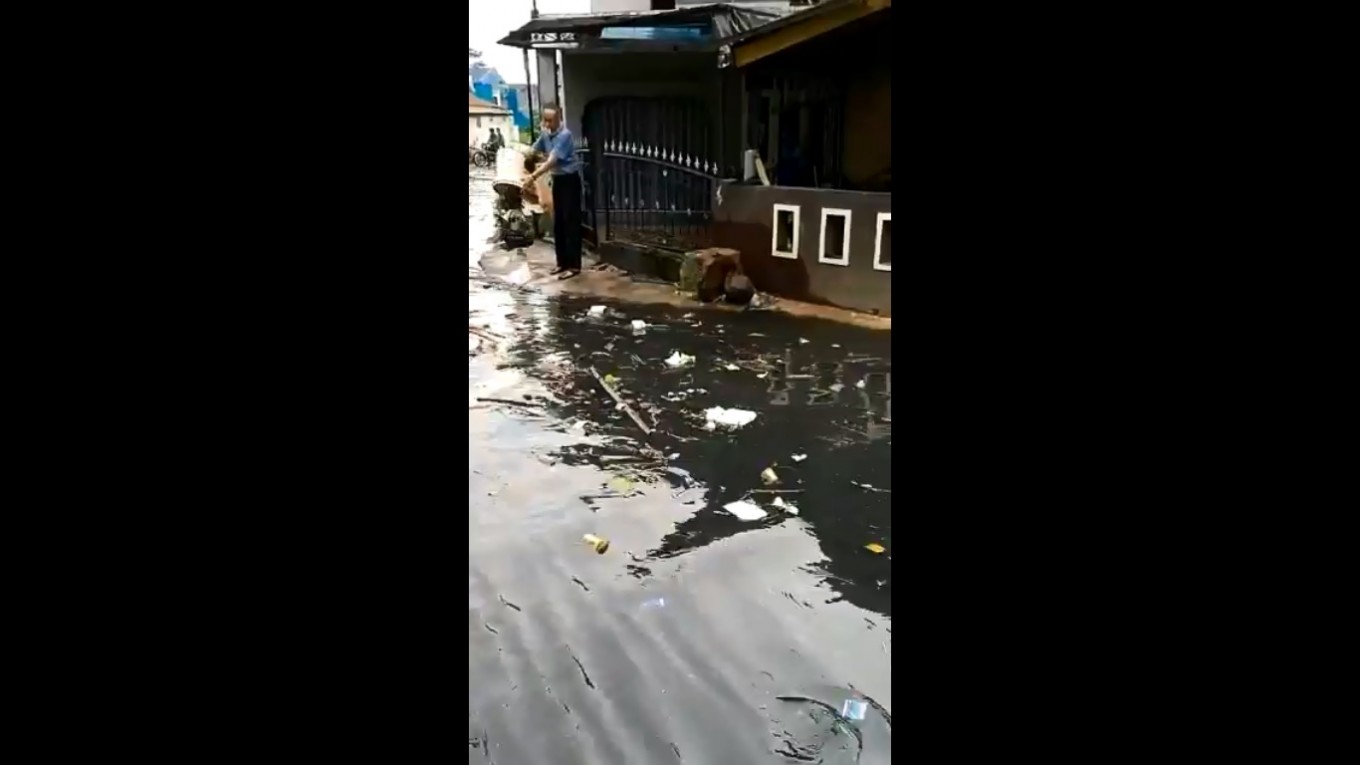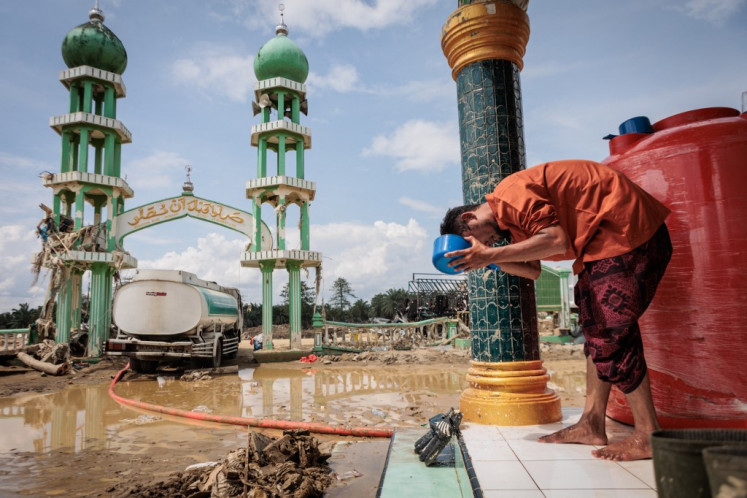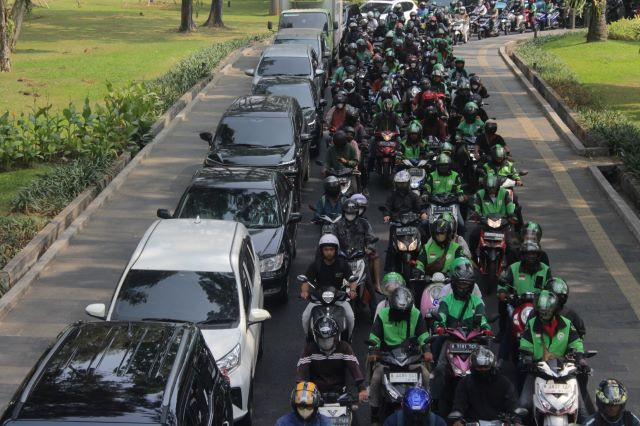Popular Reads
Top Results
Can't find what you're looking for?
View all search resultsPopular Reads
Top Results
Can't find what you're looking for?
View all search resultsVideo: Bandung road becomes river of trash. Man throws more in.
In a video that went viral on Twitter, black, waste-laden flood water flows down a road in Rancamalang, Bandung regency. A man throws more trash into the water.
Change text size
Gift Premium Articles
to Anyone
I
t is a common sight in Indonesia – trash floating in waterways. But a video that went viral on Twitter shows that even a normally dry road can turn into a river of garbage.
On Monday afternoon, Twitter user @Julie_Pandika uploaded a video showing a stream of black water laden with waste flowing down a residential road in Bandung regency, West Java.
“It occurred in Cijerah, Cimahi, yesterday afternoon,” the user wrote in the caption, referring to a sub-district in Cimahi that neighbors the regency.
Cijerah Cimahi kemarin sore,,
Kok masih ada ya yg buang sampah seperti ini?
Vidio titipan dr teman pic.twitter.com/riZlbZAVZg
— Julie▪️ (@Julie_Pandika) November 25, 2019
Another Twitter user, @SamsulH347, later corrected the location of the video. It was not recorded in Cijerah. The incident took place in Rancamalang in Bandung regency. The Jakarta Post has verified this claim with a Google Maps search.
“The road turns into a river because the ditches along the road are too shallow and so [the water] overflows onto the road,” the user wrote.
Near the end of the video, the camera turns to a man standing on the other side of the “river” holding a trash bin. The man casually throws his household waste into the water.
“How come there’s still someone throwing out their trash like this?” Twitter user @Julie_Pandika wrote in the caption.
The video caught the attention of the Public Works and Housing Ministry, which voiced its disapproval of the man's actions.
The ministry’s official Twitter account, @KemenPU, quoted the video and wrote, simply, “Pak [Sir]” accompanied by a sad-face emoticon.
pak :( https://t.co/bHTfx2nLzt
— Kementerian PUPR (@KemenPU) November 25, 2019
Rancamalang in Margaasih sub-district is a flood-prone area in Bandung regency. Residents say they regularly experience inundations during the rainy season, especially when the neighboring city of Cimahi is hit with heavy rains.
The Meteorology, Climatology and Geophysics Agency (BMKG) had called on the public to remain vigilant over the next month during the shift to the rainy season.
While the rainy season is expected to reach its peak in January and February, the agency predicted November and December would likely see bad weather and an increased chance of hydrometeorological disasters.










